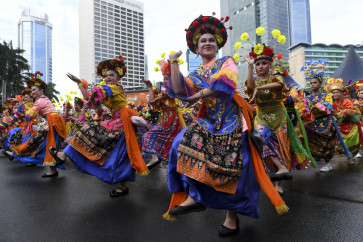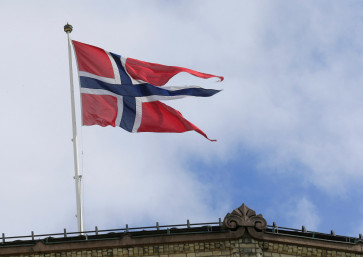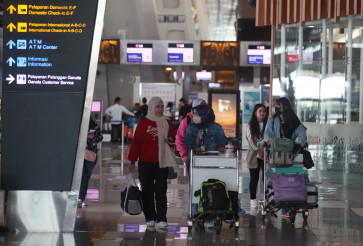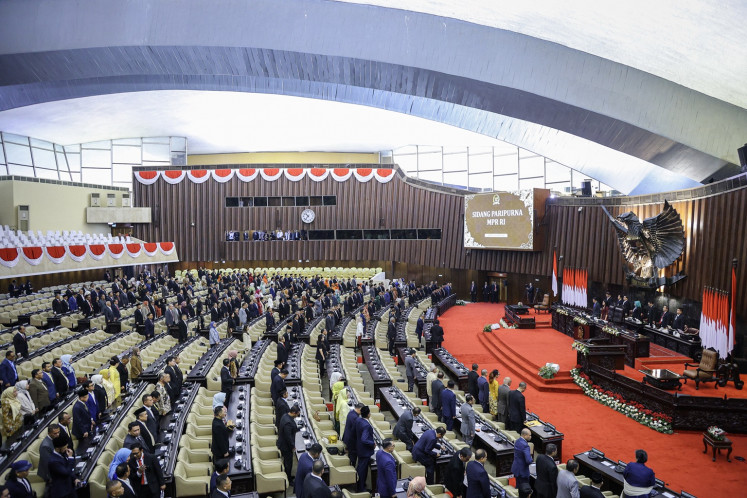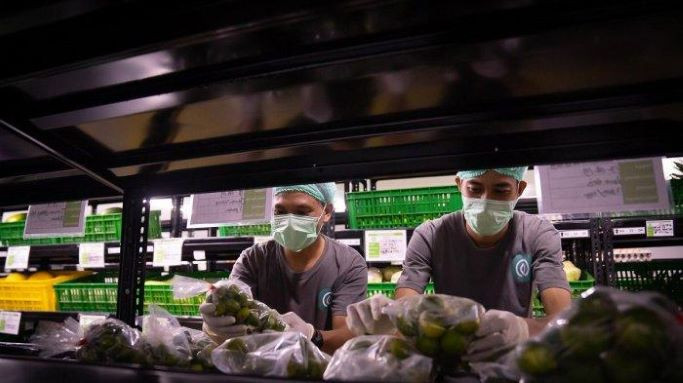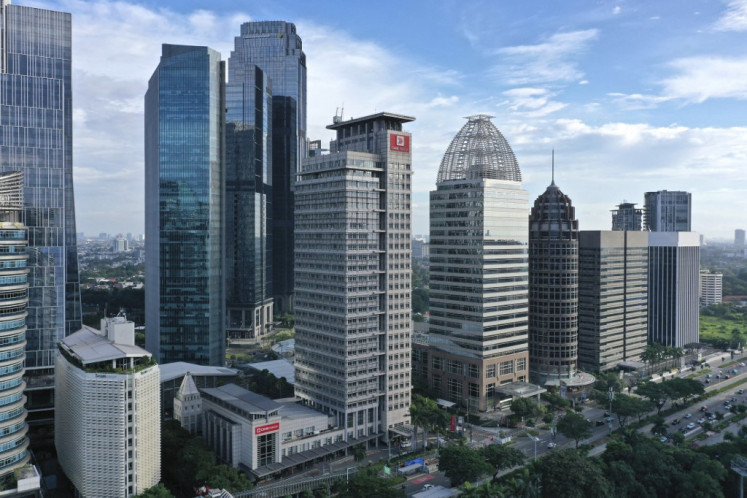Popular Reads
Top Results
Can't find what you're looking for?
View all search resultsPopular Reads
Top Results
Can't find what you're looking for?
View all search results‘Lontong’ always ready for Cap Go Meh
The Chinese New Year celebrations ended on Sunday with a feast just like the way it started
Change text size
Gift Premium Articles
to Anyone
T
he Chinese New Year celebrations ended on Sunday with a feast just like the way it started.
Some people joined the crowds at parades to celebrate, or just gathered with their families, enjoying the special meal of the day: lontong Cap Go Meh.
“It’s been a tradition in my family that during Cap Go Meh, we have lontong Cap Go Meh on our dining table. Unlike in previous years, my mom will cook it by herself this year and it’s going to be served for lunch,” Meiliani Suhinto, 28, said.
Lontong Cap Go Meh is a dish of rice cake served with either chicken or vegetable curry, a fusion of Chinese and local cuisines. People of Chinese descent in Indonesia prefer to have it as their main meal for Cap Go Meh, the 15th day of the New Year.
Erni, a seller of the special dish in Glodok, West Jakarta, said she could close the stall three hours earlier during Cap Go Meh thanks to the high number of customers coming to her stall.
“Based on previous experience, during Cap Go Meh we usually close early at 4 p.m. and we go home with two big curry buckets completely empty,” she said after serving a customer the dish.
Erni is the owner of Ketupat Gloria 65 located among the hustle-bustle of Gloria Alley in Glodok, the city’s Chinatown. She has managed the stall since her mother-in-law passed away.
The stall itself has been around since 1965 and has become one of the most popular lontong Cap Go Meh joints in Jakarta.
So popular is lontong Cap Go Meh in the city that some restaurants serve the dish only during Cap Go Meh, like Dapur Babah in Central Jakarta.
“We only have Lontong Cap Go Meh in our menu for two weeks, starting Imlek through Cap Go Meh. It’s one of the favorite meals among our customers,” Budi Purwanto of Dapur Babah said.
Besides celebrating the day with lontong Cap Go Meh, Chinese people in the city usually throng the streets to see the Barongsai (lion dance), liong (dragon dance) and toapekong (miniature statues of traditional gods and deities) parades.
But this year, only a few of those parades could be seen on the streets during the day.
“There will be no parade this year, because we have asked the gods during our ritual, and they do not want to come out this year,” Hartanto Widjaja, the staff at the Vihara Dharma Jaya temple in West Jakarta, said.
It was the second year the temple had not organized any Cap Go Meh parade observing only day worship at the temple, he said.
Several other temples in the city, such as Vihara Amurva Bhumi temple in East Jakarta, would not organize parades either for the same reason.


